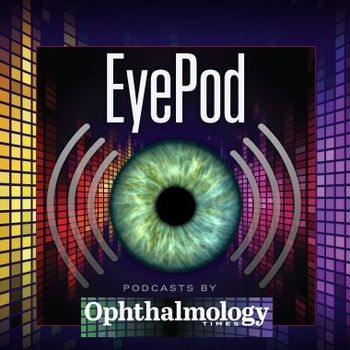
Exposure to pesticides and increased risk of AMD
Key Takeaways
- Exposure to urinary DAP metabolites from OPPs is associated with increased AMD risk, emphasizing the role of environmental factors in disease development.
- Machine learning models, particularly Random Forests, effectively predict AMD risk, showcasing high accuracy and sensitivity.
A new study links urinary metabolites from organophosphorus pesticides to increased age-related macular degeneration risk.
The risk of
The investigators pointed out that AMD is a multifactorial disease resulting from aging, genetic susceptibility, lifestyle habits, and environmental exposures, which make the pathogenesis of AMD highly intractable to prediction and interpretation. Considering that patient responses to current intravitreal treatments vary and complications are associated with treatment,2 early prevention of AMD from exposure to numerous risk factors is the most effective and feasible measure.
“Among all factors, the adverse effects from environmental chemical exposures on AMD have been heatedly discussed in population-based epidemiologic studies. For example, several researchers have emphasized the impacts of heavy metals,3 air pollutants,4 and radiation5 exposure on the development of AMD. OPPs, a group of organophosphate or phosphate sulfide esters, are prevalent insecticides commonly applied worldwide in agricultural, residential, and commercial settings with the advantages of cost-effectiveness and high efficacy in controlling pests and preventing insect-borne diseases.6 Nevertheless, the persistent non-biodegradable nature and propensity of residue accumulation in soil and water bodies, in conjunction with multiple routes of human exposure to OPPs, for instance, ingestion, inhalation, and skin contact, have raised public attention to concern about their toxic effects on human health and ecosystems,7” they said.
The OPPs can be swiftly absorbed, metabolized, and eliminated as urinary DAP metabolites from the body, commonly used as biomarkers in cohort studies.8
Previous research has identified that OPPs are relevant to diverse diseases, including cancer,9 central nervous system disorders (Parkinson’s disease 10and depression),11 sleep problems,12 diabetes,13 hypertension,14 sex hormone function,15 and atopic diseases.16
The investigators identified patients from the National Health and Nutrition Examination Survey17 between 2005 and 2008. Urinary DAP metabolites were used to construct a machine learning (ML) model for AMD prediction, they explained.
They used interpretability pipelines, ie, permutation feature importance (PFI), partial dependence plot (PDP), and SHapley Additive exPlanations (SHAP), to analyze the effects of exposure features to prediction outcomes.
Exposure effects
The authors reported that of the 1,845 patients in the study, 137 had been diagnosed with AMD. Receiver operating characteristic curve analysis evaluated Random Forests as the best ML model with its optimal predictive performance among 11 models. PFI and SHAP analyses indicated that DAP metabolites were of significant contribution weights in AMD risk prediction, higher than most of the sociodemographic covariates. Shapley values and waterfall plots of randomly selected AMD individuals emphasized the predictive capacity of ML with high accuracy and sensitivity in each case. The relationships and interactions visualized by graphical plots and supported by statistical measures showed the indispensable effects of six DAP metabolites to the prediction of AMD risk, the investigators reported.
The authors believe this study yields a novel insight into the link between environmental factors and health outcomes.
The study concluded, “Urinary DAP metabolites of OPPs exposure are associated with AMD risk, and ML algorithms show excellent generalizability and differentiability in the course of AMD risk prediction.”
References
Jiang Y-X, Gui S-y, Sun X-D. Associations between organophosphorus pesticides exposure and age-related macular degeneration risk in U.S. adults: analysis from interpretable machine learning approaches. Int J Ophthalmol. 2025;18:1214-1230. DOI:10.18240/ijo.2025.07.04
Rakoczy EP. The promise of long-term treatment for neovascular age related macular degeneration. Lancet. 2024;403(10436):1517-1519.
Park SJ, Lee JH, Woo SJ, et al. Five heavy metallic elements and age related macular degeneration: Korean National Health and Nutrition Examination Survey, 2008-2011. Ophthalmology. 2015;122:129-137.
Liu L, Li C, Yu HH, et al. A critical review on air pollutant exposure and age-related macular degeneration. Sci Total Environ. 2022;840:156717.
Brodzka S, Baszyński J, Rektor K, et al. Immunogenetic and environmental factors in age-related macular disease. Int J Mol Sci. 2024;25:6567.
Costa LG. Organophosphorus compounds at 80: some old and new issues. Toxicol Sci. 2018;162:24-35.
Nandi NK, Vyas A, Akhtar MJ, et al. The growing concern of chlorpyrifos exposures on human and environmental health. Pestic Biochem Physiol. 2022;185:105138.
Li AJ, Kannan K. Profiles of urinary neonicotinoids and dialkylphosphates in populations in nine countries. Environ Int. 2020;145:106120.
Sun HB, Sun ML, Barr DB. Exposure to organophosphorus insecticides and increased risks of health and cancer in US women. Environ Toxicol Pharmacol. 2020;80:103474.
Narayan S, Liew Z, Bronstein JM, et al. Occupational pesticide use and Parkinson’s disease in the Parkinson Environment Gene (PEG) study. Environ Int. 2017;107:266-273.
Wu YD, Song J, Zhang Q, et al. Association between organophosphorus pesticide exposure and depression risk in adults: a cross-sectional study with NHANES data. Environ Pollut. 2023;316(Pt 1):120445.
Han L, Wang Q. Association between organophosphorus insecticides exposure and the prevalence of sleep problems in the US adults: an analysis based on the NHANES 2007-2018. Ecotoxicol Environ Saf. 2023;255:114803. 14
Guo XW, Wang H, Song QX, et al. Association between exposure to organophosphorus pesticides and the risk of diabetes among US Adults: Cross-sectional findings from the National Health and Nutrition Examination Survey. Chemosphere. 2022;301:134471.
Dong YQ, Xu W, Liu SP, et al. Serum albumin and liver dysfunction mediate the mediate the associations between organophosphorus pesticide exposure and hypertension among US adults. Sci Total Environ. 2024;948:174748.
Zhang YQ, Wu WK, Zhu XD, et al. Organophosphorus insecticides exposure and sex hormones in general U.S. population: a crosssectional study. Environ Res 2022;215(Pt 2):114384.
Dantzer J, Wood R, Buckley JP. Organophosphate pesticide exposure and atopic disease in NHANES 2005-2006. J Allergy Clin Immunol Pract. 2021;9:1719-1722.e3.
https://www.cdc.gov/nchs/nhanes/ index.htm.
Newsletter
Don’t miss out—get Ophthalmology Times updates on the latest clinical advancements and expert interviews, straight to your inbox.













































